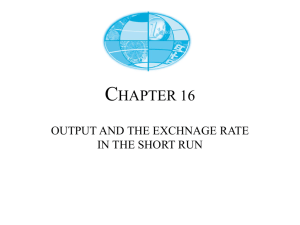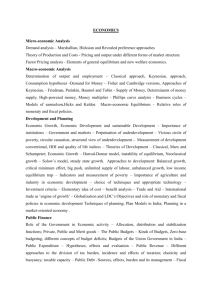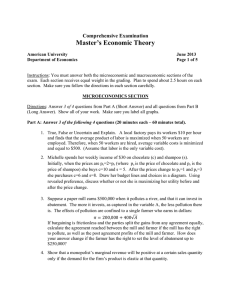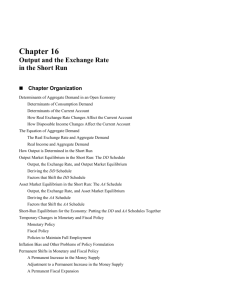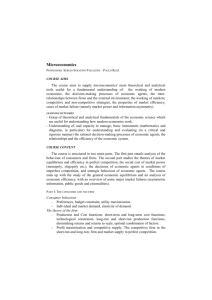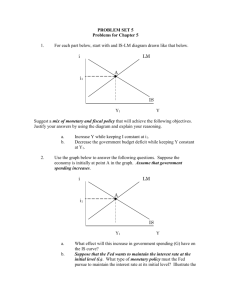Another Practice Exam 2
advertisement
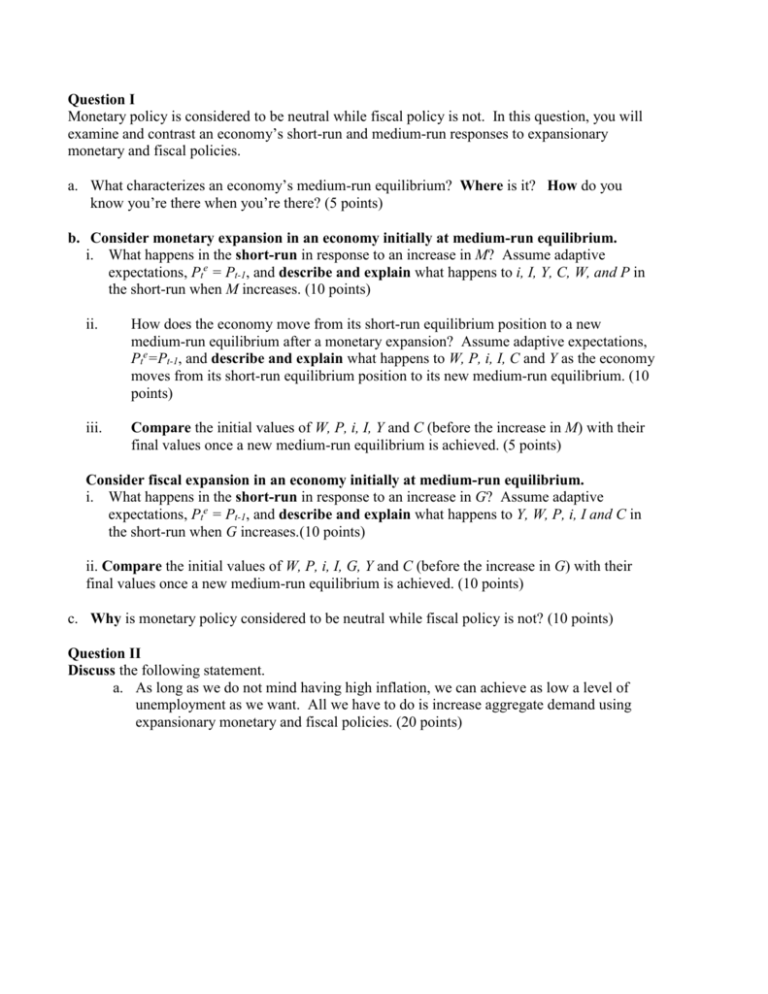
Question I Monetary policy is considered to be neutral while fiscal policy is not. In this question, you will examine and contrast an economy’s short-run and medium-run responses to expansionary monetary and fiscal policies. a. What characterizes an economy’s medium-run equilibrium? Where is it? How do you know you’re there when you’re there? (5 points) b. Consider monetary expansion in an economy initially at medium-run equilibrium. i. What happens in the short-run in response to an increase in M? Assume adaptive expectations, Pte = Pt-1, and describe and explain what happens to i, I, Y, C, W, and P in the short-run when M increases. (10 points) ii. How does the economy move from its short-run equilibrium position to a new medium-run equilibrium after a monetary expansion? Assume adaptive expectations, Pte=Pt-1, and describe and explain what happens to W, P, i, I, C and Y as the economy moves from its short-run equilibrium position to its new medium-run equilibrium. (10 points) iii. Compare the initial values of W, P, i, I, Y and C (before the increase in M) with their final values once a new medium-run equilibrium is achieved. (5 points) Consider fiscal expansion in an economy initially at medium-run equilibrium. i. What happens in the short-run in response to an increase in G? Assume adaptive expectations, Pte = Pt-1, and describe and explain what happens to Y, W, P, i, I and C in the short-run when G increases.(10 points) ii. Compare the initial values of W, P, i, I, G, Y and C (before the increase in G) with their final values once a new medium-run equilibrium is achieved. (10 points) c. Why is monetary policy considered to be neutral while fiscal policy is not? (10 points) Question II Discuss the following statement. a. As long as we do not mind having high inflation, we can achieve as low a level of unemployment as we want. All we have to do is increase aggregate demand using expansionary monetary and fiscal policies. (20 points)
